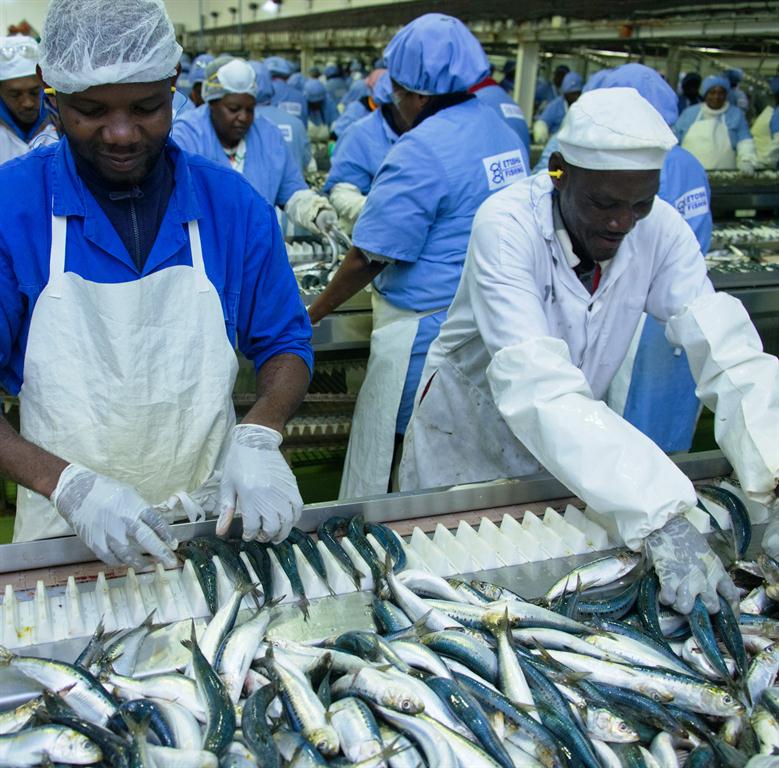Etosha to retrench
Low pelagic catches force cost cutting
Etosha Fishing Corporation has announced the retrenchment of 21 members of its 65 land-based workforce.
Etosha Fishing managing director Pieter Greeff said the decision was not taken lightly and added it was necessary to cut down on costs in order to ensure the long-term sustainability of the company amidst challenging times.
The cut-back measures include the closure of redundant divisions within the organisation and the streamlining of the remaining permanent employment positions. The measures affect staff across the board ranging from senior management to the lowest level of employment.
According to Greeff the lag effect of poor pilchard catches during the 2015 and 2016 seasons, combined with the dramatic drop in the exchange rate at the beginning of the year, has made this decision unavoidable.
During the 2015 pilchard season 2 000 tonnes of the total allowable catch (TAC) was not landed by the pelagic industry.
The fisheries ministry only allocated 10 000 tonnes of the 14 000 TAC announced in 2016, for catching, and only 3 400 tonnes were eventually landed. The company undertook numerous fishing trips this year and recorded six incidences of zero catches. Apart from not finding pilchard, other factors which contributed to an extremely poor fishing season are below-size fish and bad weather. Against this backdrop the pelagic industry took the decision to not continue looking for pilchard.
The allocated quota was returned to the ministry and an was exemption granted from quota levies.
Greeff noted that due process was followed to ensure compliance with all legislative requirements and said the company engaged the labour ministry, the Namibia Seamen and Allied Workers Union (NASAWU) as well as the fisheries ministry to ensure that the process is dealt with in the most sincere and amicable manner. With Namibia’s pilchard resource under threat for a number of years now, Etosha Fishing has imported frozen pilchard annually since 2010 in order to sustain jobs at its cannery. It is the only cannery in Walvis Bay that remained open during the course of 2016.
This year another 6 400 tonnes was imported during the first quarter of the year. However, as a result of the dramatic drop in the exchange rate at the start of the year, the imported fish could not be processed profitably.
The Walvis Bay-based company, which was established in the 1940s, has been a leading player in the Namibian fishing industry and is considered to be one of the foremost round-can production facilities.
Etosha Fishing managing director Pieter Greeff said the decision was not taken lightly and added it was necessary to cut down on costs in order to ensure the long-term sustainability of the company amidst challenging times.
The cut-back measures include the closure of redundant divisions within the organisation and the streamlining of the remaining permanent employment positions. The measures affect staff across the board ranging from senior management to the lowest level of employment.
According to Greeff the lag effect of poor pilchard catches during the 2015 and 2016 seasons, combined with the dramatic drop in the exchange rate at the beginning of the year, has made this decision unavoidable.
During the 2015 pilchard season 2 000 tonnes of the total allowable catch (TAC) was not landed by the pelagic industry.
The fisheries ministry only allocated 10 000 tonnes of the 14 000 TAC announced in 2016, for catching, and only 3 400 tonnes were eventually landed. The company undertook numerous fishing trips this year and recorded six incidences of zero catches. Apart from not finding pilchard, other factors which contributed to an extremely poor fishing season are below-size fish and bad weather. Against this backdrop the pelagic industry took the decision to not continue looking for pilchard.
The allocated quota was returned to the ministry and an was exemption granted from quota levies.
Greeff noted that due process was followed to ensure compliance with all legislative requirements and said the company engaged the labour ministry, the Namibia Seamen and Allied Workers Union (NASAWU) as well as the fisheries ministry to ensure that the process is dealt with in the most sincere and amicable manner. With Namibia’s pilchard resource under threat for a number of years now, Etosha Fishing has imported frozen pilchard annually since 2010 in order to sustain jobs at its cannery. It is the only cannery in Walvis Bay that remained open during the course of 2016.
This year another 6 400 tonnes was imported during the first quarter of the year. However, as a result of the dramatic drop in the exchange rate at the start of the year, the imported fish could not be processed profitably.
The Walvis Bay-based company, which was established in the 1940s, has been a leading player in the Namibian fishing industry and is considered to be one of the foremost round-can production facilities.





Comments
Namibian Sun
No comments have been left on this article